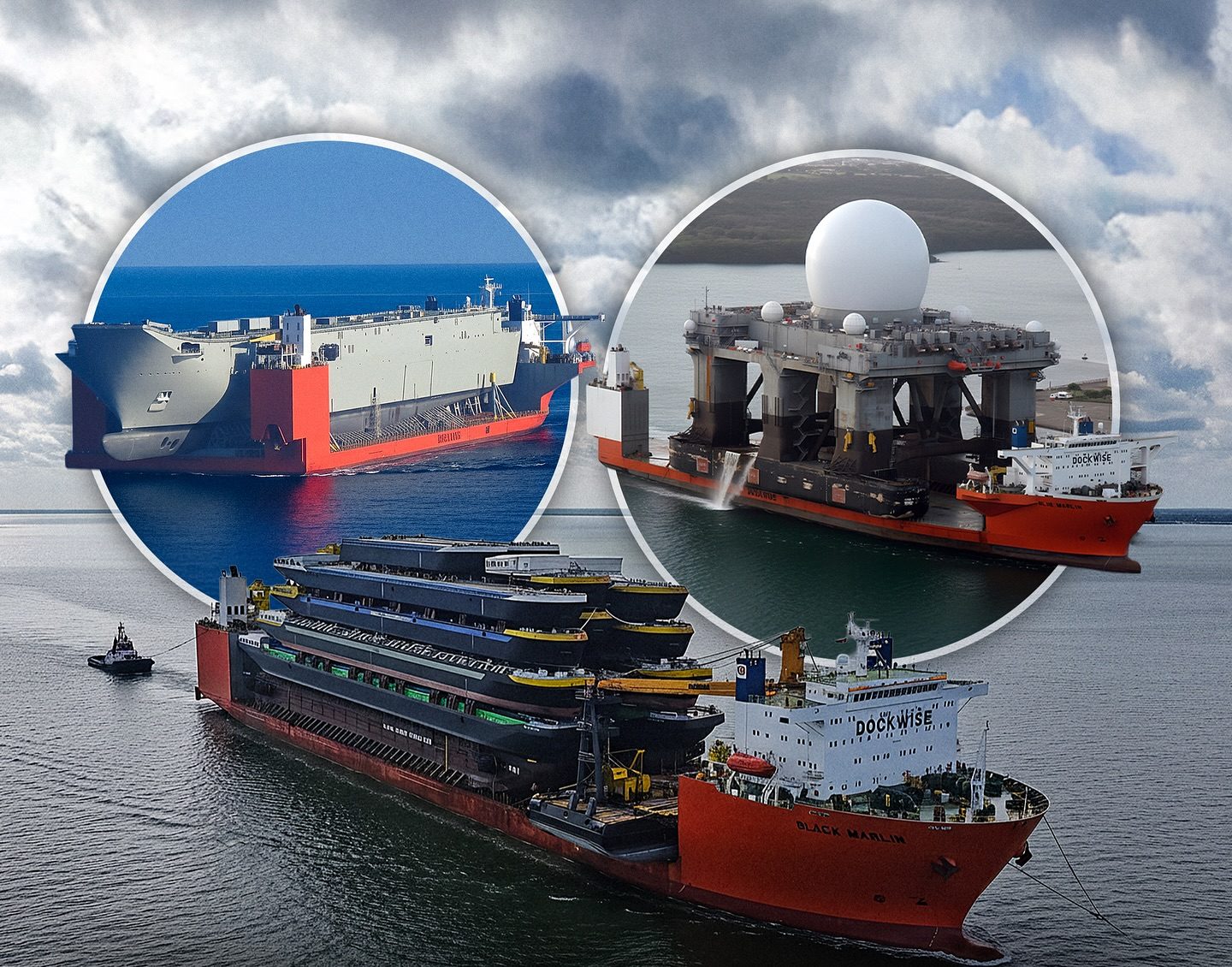Meet Blue Marlin, the Semi-Submersible Heavy-Lift Vessel That Can Carry Warships, Oil Rigs, and Building-Sized Hardware Across Oceans
When you think of ships, you probably imagine cargo vessels stacked with containers, or maybe cruise liners filled with holidaymakers. But there’s one ship in the world that doesn’t carry ordinary cargo—it carries other ships. Its name is Blue Marlin, and once you learn about it, you’ll never look at the ocean the same way again.
Blue Marlin is a semi-submersible heavy-lift vessel, and its design is as fascinating as its purpose. Instead of cranes and docks, it uses ballast. The ship sinks itself under the waves by taking on massive amounts of seawater, lowering its deck until it’s submerged. Then, its cargo—be it another ship, an oil rig, or even a floating radar station—slides or is carefully positioned above the deck. Once everything is in place, Blue Marlin pumps out the ballast water, rising slowly like a giant steel whale lifting its catch out of the sea. In that moment, what was once floating on the ocean is now riding on the back of Blue Marlin, ready to be carried across thousands of miles of open water.
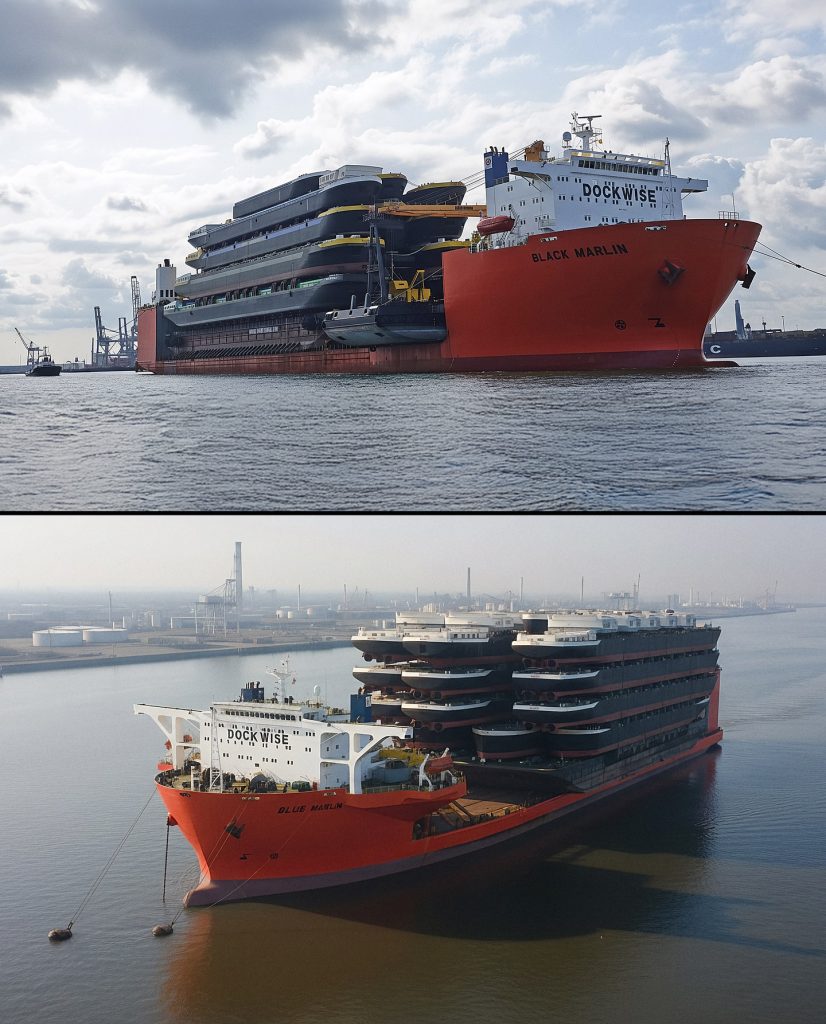
This isn’t just an impressive trick; it’s a necessity for industries that deal in equipment so large that moving it by any other method would be impossible. Blue Marlin is capable of carrying about 76,000 tons in one journey, which is a number that can make your jaw drop when you put it into perspective. That’s heavier than some of the world’s largest aircraft carriers, or the equivalent of hundreds of jumbo jets. Its deck is 224 meters long—roughly the size of two football fields—and wide enough to hold structures that look absurdly out of place on a ship.
One of the most famous missions Blue Marlin ever undertook happened in the year 2000. The U.S. Navy destroyer USS Cole was attacked while docked in Yemen, leaving it severely damaged and unable to sail. Rather than scrapping the billion-dollar ship, the Navy turned to Blue Marlin. The heavy-lift vessel carried the crippled destroyer across the Atlantic, safely delivering it to the United States for repairs. The image of one warship piggybacking on another remains one of the most iconic displays of Blue Marlin’s capabilities.
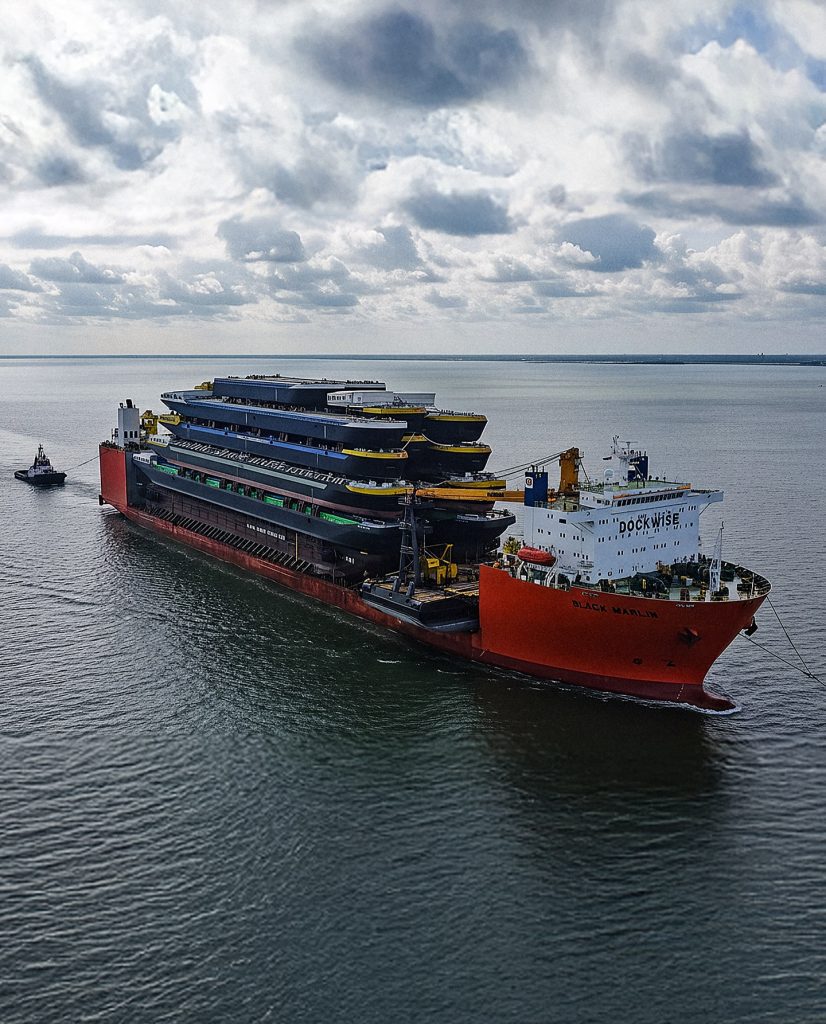
But that wasn’t a one-off. Blue Marlin has transported oil platforms, floating radar domes, and massive industrial structures that are too unwieldy for any other form of transportation. Offshore oil rigs are like floating skyscrapers made of steel and machinery, and yet Blue Marlin has carried them as though they were little more than oversized packages. The ship has even transported radar stations that look like giant golf balls balanced on platforms, moving them across oceans to where they’re needed most.
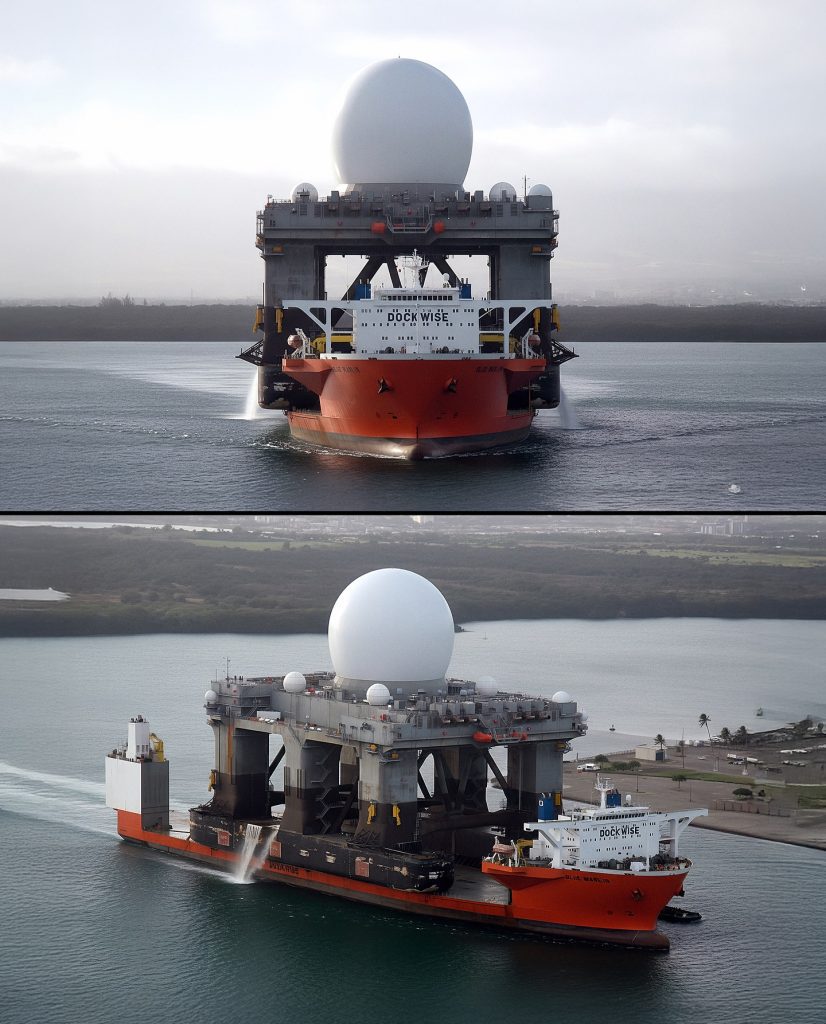
Every mission is unique, and every load comes with its own engineering challenges. It’s not just about strength; it’s about balance and stability. When you’re carrying a structure the size of a city block across seas that can whip up violent storms, you need more than just raw power—you need precision. The crew that operates Blue Marlin are experts not only in navigation but in managing ballast systems, weight distribution, and stability under conditions that would push lesser ships to their limits.
For the people who work onboard, life is steady and methodical, but the responsibility is enormous. They spend weeks at sea, ensuring that their floating cargo—sometimes worth billions of dollars—makes it to its destination safely. They don’t get the glory that fighter pilots or astronauts might, but they quietly perform some of the most impressive logistical feats on earth.
What makes Blue Marlin so remarkable isn’t just the scale of what it does, but the way it turns the ocean into a kind of freight lane for objects that would otherwise be immovable. Trucks carry cars, trains carry steel, planes carry passengers. But Blue Marlin? It carries the things that carry everything else. It carries the infrastructure of industries. It carries the platforms on which nations project power. It carries the building blocks of the modern world.
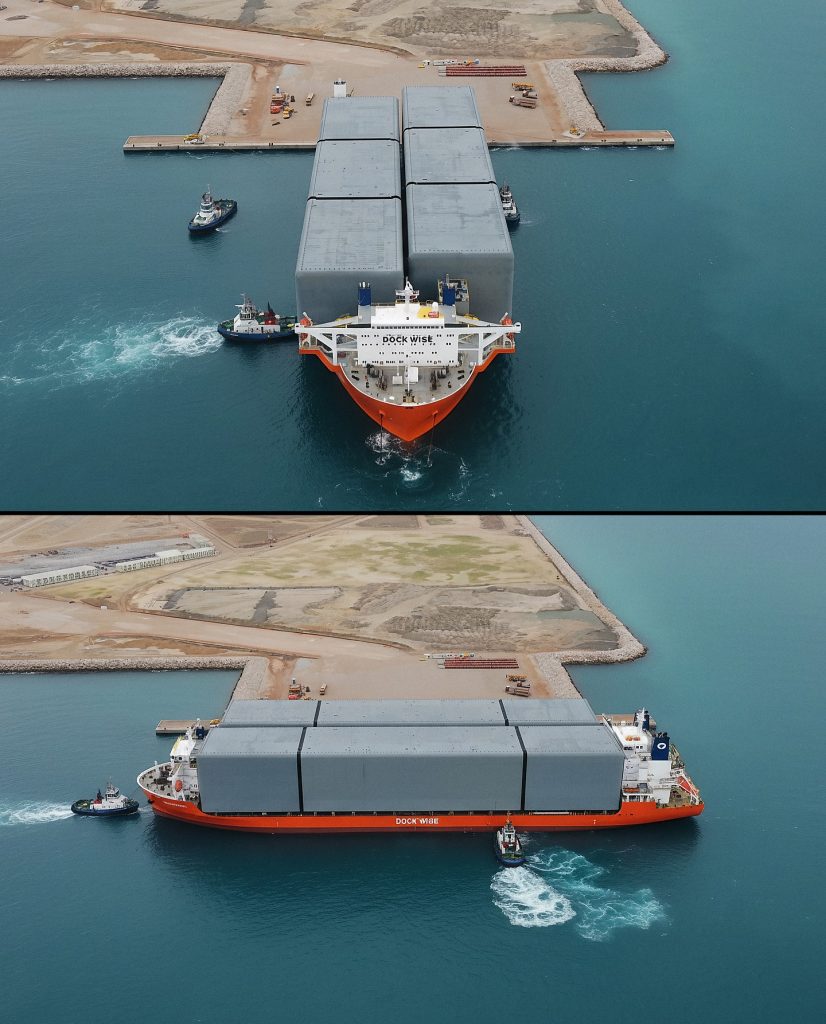
The existence of ships like Blue Marlin is also a reminder of how humanity refuses to be limited by size. Every time engineers encounter a problem that seems too big—literally—they build a solution that makes it manageable. When you see Blue Marlin sailing with an oil rig or a warship strapped to its back, it doesn’t just feel impressive, it feels almost unreal, like a scene from a futuristic science fiction movie. And yet it’s very real, happening quietly on the open seas.
In today’s world, where renewable energy is growing and offshore wind farms are becoming larger and more complex, the need for vessels like Blue Marlin is only increasing. Wind turbine blades are now longer than football fields, and offshore platforms are getting heavier and taller with every generation. Blue Marlin, and ships like it, are the silent workhorses that make this progress possible.
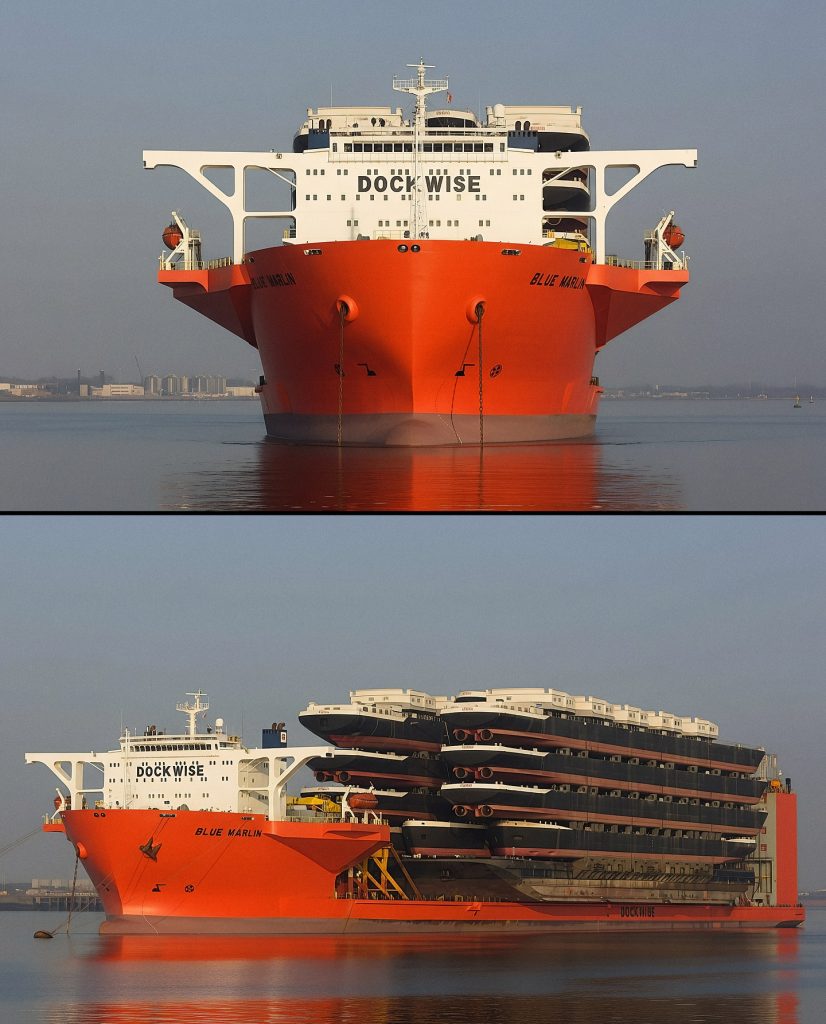
There’s something deeply poetic about the Blue Marlin. The ocean has always been humanity’s greatest obstacle—vast, dangerous, unpredictable. And yet, we’ve learned to master it, not just by building ships that float, but by building ships that carry other ships. Blue Marlin isn’t just a vessel—it’s a symbol of our determination to move the unmovable, to solve problems that seem unsolvable, and to keep pushing the boundaries of what can be done.
So, the next time you see an image of Blue Marlin with a warship or an oil rig balanced on its back, take a moment to appreciate what you’re looking at. It’s not just steel and ballast and horsepower—it’s ingenuity, teamwork, and quiet brilliance at work. It’s the ship that ships ships, and in its own understated way, it’s one of the most extraordinary machines ever built.

